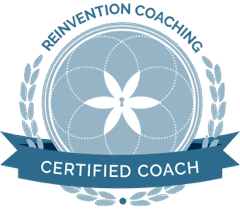Today’s blog focuses on an often-overlooked subject: anguish. Specifically, we’ll explore what I call “white anguish.” Brené Brown once remarked how it can hurt just to think about it, and she’s right. White anguish is a quiet but persistent form of suffering that many of us live with, yet rarely acknowledge.
What is White Anguish?
The dictionary defines “anguish” as excruciating or acute distress, suffering, or pain. Common synonyms include agony, grief, heartache, and misery. But what about white anguish? I like to compare it to white noise. It’s that constant hum in the background, ever-present but often unnoticeable, unless we tune into it. White anguish operates similarly— it’s an undercurrent of distress, existing just below the surface of our awareness, and yet it influences our every move, decision, and belief. It may not dominate our conscious thoughts, but it’s always there.
In my upcoming book Transformed, I dive into how I became accustomed to disappointment, disapproval, and shame from a young age. Growing up with ADHD and as a transgender person, I internalized shame and unworthiness, allowing them to shape my worldview. Over time, they became part of my emotional landscape, forming the white anguish that followed me through life.
How White Anguish Affects Us All
Not everyone struggles with fear, shame, or unworthiness to the same degree. These emotions exist within each of us to some extent, depending on our upbringing and life experiences. However, for some people—myself included—these emotions can be crippling. In my case, they led to self-destructive behavior, including alcohol addiction and despair. For years, I lost hope for a life filled with love, joy, and acceptance.
What I find interesting is how we tend to consume anguish through media, whether it’s watching the devastation of a natural disaster, feeling the emotional highs and lows of Olympic athletes, or streaming intense dramas on our devices. This passive consumption of anguish gives us a sense of fulfillment. It’s almost as if we’re snacking on it—digesting small bites of others’ pain while feeling relieved it’s not happening to us.
However, this isn’t the same as dealing with our own anguish. White anguish often manifests as hopelessness, that deep, internal belief that nothing can change. This type of anguish eats away at us quietly, with no obvious cause to address, making it even more difficult to overcome.
Generational Anguish and Historical Trauma
It’s devastating to think that anguish can become a way of life for entire groups of people. We’ve seen this play out throughout history. Think about the generational trauma African Americans endured under Jim Crow laws or the anguish Jews faced during the Holocaust. These experiences leave an indelible mark on the psyche, altering not just how individuals see the world, but even, perhaps, their very DNA. This form of anguish becomes woven into the fabric of daily life, keeping people trapped in a state of perpetual suffering.
I’ve felt this too, albeit in a different form. The stigma of being transgender was so deeply ingrained in me that it felt like a permanent stain on my soul. It took years of hard work—therapy, introspection, and self-love—to neutralize that shame and replace it with acceptance and pride. I had to forgive myself for internalizing society’s negative beliefs about who I was and learn to see the lessons hidden within my struggle.
From White Anguish to Transformation
The journey to overcoming white anguish wasn’t easy. I had developed a belief in disbelief, an internal atmosphere of failure and hopelessness. For a long time, I didn’t believe I’d ever “get life right” or that I could achieve my dreams. But over time, I realized that these limiting beliefs were just that—beliefs. And beliefs can be changed.
Today, I specialize in transformational coaching, guiding my clients through the process of breaking free from their own white anguish, fear, shame, and unworthiness. There’s nothing more fulfilling than helping someone liberate themselves from emotional pain and step into a life filled with joy and purpose. It’s intoxicating, in the best possible way, to watch my clients transform their lives from the inside out.
Coaching as a Tool for Personal Liberation
It’s important to note that coaching is not a substitute for therapy. Therapy is often essential for addressing deep-seated trauma or mental health issues. Coaching, on the other hand, is designed to guide you from where you are to where you want to be. It helps you bridge the gap between your current reality and your dreams.
In my coaching practice, I help clients uncover and challenge their hidden commitments and limiting beliefs. These are the unconscious agreements we make with ourselves, often rooted in shame, that keep us from moving forward. By breaking through these barriers, we can co-create personal transformation that lasts.
An Invitation to Transform
As many of you know, this kind of work isn’t easy. In fact, most people shy away from the opportunity to change because they’ve developed negative biases toward growth. It’s easier to stay in a place of suffering than to do the hard work required for liberation.
That’s why I’m offering a guided, 6-week experiential book study based on Nancy Levin’s powerful book Jump… And Your Life Will Appear: An Inch-by-Inch Guide to Making a Major Change. This course is designed to take you step-by-step through the process of making a significant transformation in your life.
Here are the details:
- 6-Week Experiential Book Study
- Sundays from 5:00 – 6:15 PM Pacific
- November 10, 17, 24, and December 1, 8, 15
- Investment: $195 (Zelle is preferred)
To register, simply text “I’m Ready” to 818-288-6950. I can’t wait to embark on this journey with you!
I’ve attached the link to the meditation I gave recently on Joy… enjoy
Love and joy,
Coach Karyn







